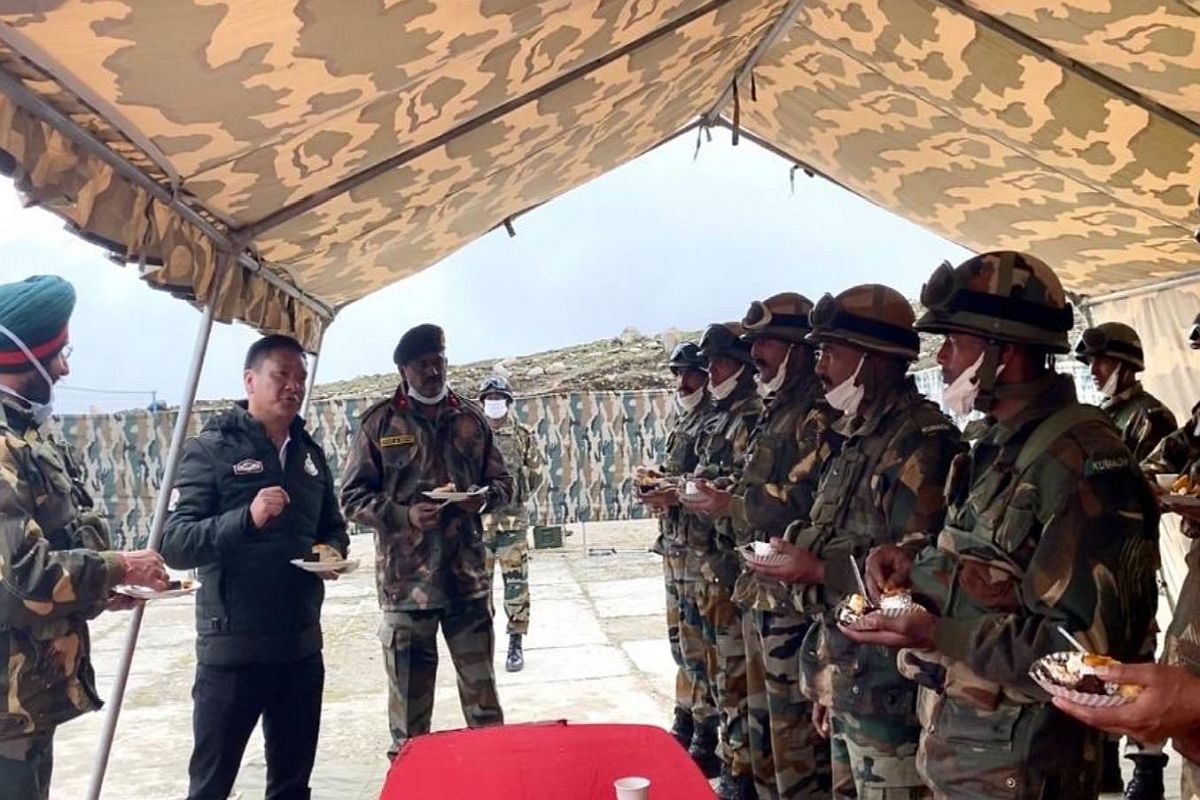Two students among six killed in Srinagar boat mishap
At least six people, including two school children, were killed early morning on Tuesday when a boat ferrying them on the river Jhelum capsized in the outskirts of Srinagar.
The statement assumes significance as China has been in occupation of the autonomous region of Tibet, an area of around 2.5 million sq km, since 1951 and the Tibetan government has been in exile in India.

Arunachal Pradesh Chief Minister Pema Khandu with armed forces. (Photo: Twitter | @PemaKhanduBJP)
Amid tensions with China along the Line of Actual Control, Arunachal Pradesh Chief Minister Pema Khandu on Wednesday termed (LAC as the “Indo-Tibet border”.
Posting pictures of an Army event in the state, Khandu tweeted, “The valour of Indian Army is what we counted ever since our Independence. Had an opportunity to interact with the brave jawans today at Bumla post on the Indo-Tibet border. Their josh (excitement) is at the highest level. We are in safe hands when it comes to our borders.”
The valour of Indian Army is what we counted ever since our Indepence. Had an opportunity to interact with the brave jawans today at Bumla post on Indo-Tibet border.
Their josh is at highest level. We are in safe hands when it comes to our borders ..!! pic.twitter.com/kwg5Uyx3MBAdvertisement
— Pema Khandu པདྨ་མཁའ་འགྲོ་། (@PemaKhanduBJP) June 24, 2020
The statement assumes significance as China has been in occupation of the autonomous region of Tibet, an area of around 2.5 million sq km, since 1951 and the Tibetan government has been in exile in India.
New Delhi refers its border with Tibet in Arunachal Pradesh as the LAC.
China disputes India’s sovereignty over Arunachal Pradesh, which has an area of around 84,000 sq km and population of around 1.5 million. India’s boundaries were defined by the British before Independence. But China occupied Aksai Chin in Jammu & Kashmir and raised dispute over the boundary of Arunachal Pradesh in the 1962 war with India.
Around 1,00,000 Tibetans (73 per cent of all Tibetans), including the Dalai Lama, their spiritual leader, are in exile in India.
However, in the last few years, the Central government seems to be distancing itself from the community. In 2018, the Government prohibited its officials and leaders from attending the events to mark the 60th anniversary of Tibetan exile.
The prohibition came on the eve of an informal summit between Prime Minister Narendra Modi and Chinese President Xi Jinping. As a result, the Tibetan government in exile cancelled its events in New Delhi.
Meanwhile, tensions between India and China heightened after a violent face-off between the troops of both sides at Galwan valley in eastern Ladakh on June 15. India lost 20 of its soldiers in the clash.
Several areas along the LAC in Ladakh and North Sikkim have witnessed major military build-up by both the Indian and Chinese armies recently, in a clear signal of escalating tension and hardening of respective positions by the two sides.
The nearly 3,500-km-long LAC is the de-facto border between the two countries.
Indian and Chinese troops have remained engaged in an eyeball-to-eyeball situation in several areas along the LAC in eastern Ladakh, signalling that the standoff could become the biggest military face-off after the Doklam crisis in 2017.
Meanwhile, the Government of India has changed the Rules of Engagement (RoE) across the Line of Actual Control (LAC) after the unprecedented violent clash at Galwan valley.
As per the new Rules of Engagement, commanders deployed at LAC can give soldiers “complete freedom of action” to handle situations at the tactical level. The commanders can now use firearms and have full authority to respond to extraordinary situations using all resources at their disposal.
Earlier, these were not part of the Rules of Engagements across the LAC.
Advertisement